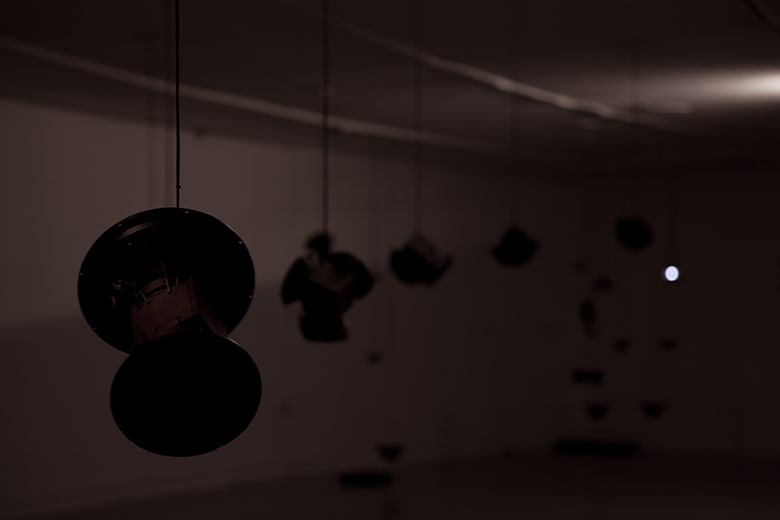The sound installation Murmur(i)os is an acousmatic gallery that projects sound images of Bogotá through a sixteen-channel cinematophone distributed across eighty-eight sound projectors — loudspeakers. It is arranged in the space as an electroacoustic flow of sound images, moving from the city’s original and archaic state, through the urban sphere founded on voice, the sacred, and the festive, until dissolving into technological and media-driven Bogotá, as if it were a vapor or a sonic tide. Soundscapes of a fictional and imagined city formed of fragments and textures; of masses and densities; of movements, velocities, and traces. The murmurs of Bogotá emerge like an enveloping vapor.
Murmurio is the background noise formed by the flow of waters or by the sound of leaves moved by the wind — from the Latin murmur. The verb murmurar is an onomatopoeia of the sound produced by the flow of water moving through sand and stones — from the Latin murmurare.
The crystal liquids of the streams,
murmuring between white and dusky pebbles,
went to pay tribute to the rivers.
Miguel de Cervantes, Don Quijote, vol. 2, ch. 3
Along two loxodromic lines and three nodes, a series of sound maps — audible navigation charts — is distributed, unfolding sonic paths from south to north across the gallery, evolving from bottom to top, creating differentiated listening environments and generating sonic routes and movements that interweave, juxtapose, and overlap, producing an ever-changing polyphony that includes silence as an essential component.
The three nodes constitute specialized realms: the southern node is the nucleus in which the installation is born as a foundational event, and it refers to the “concrete” aspects of the city: the tectonic and the telluric; water, river currents, thunder, and rain; air, winds, and the presence of the biological substratum. The meridional node, which temporarily interrupts the loxodromic lines like a sonic compass rose marking the cardinal points of the city, consists of sprinklers of loudspeakers in an ascending spiral located above the listeners’ heads. In this node, the most intimate interior of Bogotá is heard: the mechanical, the infrastructural, the psychological, language, speech, voices, rumors, whispers, bell towers, and civil, religious, and political events. Lastly, the northern node, a region of dissolution, marks the state of a city evolving into an electric, electronic, telematic, virtual, media-driven, and dematerialized metropolis. Here, one hears the mass media, radio, cinema, television, the Internet; spectacles, simulations, electroacoustic reproduction chains, sound images of mediated realities, and interfaces of the future.
Wherever we are, what we hear is mostly noise. When we ignore it, it disturbs us. When we listen to it, we find it fascinating.
John Cage
The varied grouping of sound projectors in the space — in terms of their position, height, orientation, and density — allows for multiple sonic perspectives, creating diverse listening situations and encouraging the listener to move and shift posture, freely selecting their path and pausing wherever they encounter a sound image or particle that captures their interest. The listener — adult or child — has a general and diffuse perception of the city’s fluid sonic complexity, yet can also stop to listen closely to particular sound figures. They can move and position their body and ear in different postures… They stop, crouch, lean, sit, stand, lie down, tiptoe; their rhythms may vary, remaining for long or short periods in the place they choose or where the chance of the journey suggests. The black cushions freely arranged on the floor enable these varied listening situations. In addition, five beacons and six ambient luminaires with very dim light were placed along the central axis of the space, enveloping the listening experience in a half-light that forces the eye to yield to the darkness so that the ear may attune itself to attentive and refined listening.
MB
https://soundcloud.com/carlosmauriciobejarano/murmurios-2011-fragmento-1



